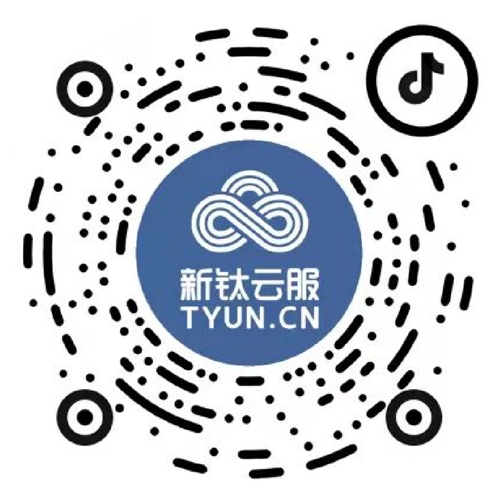-
构建Labmda函数实现AWS资源自动标签
本篇文章介绍了一种自动为AWS资源打标签的解决方案,当前支持以下资源的自动打标签:
- EC2(Elastic Compute Cloud)
- EBS(Elastic Block Store)
- RDS(Relational Database Service)
- S3 bucket
- S3 object(需要开启事件记录,默认不开启)
- VPC(Virtual Private Cloud)
- ELB(Elastic Load Balancer)
- Target Groups
程序逻辑
通过CloudTrail追踪创建资源事件,EventBridge根据预设的规则判断并触发Lambda函数。Lambda 函数运行 Python代码进行打标签操作。
整个过程实现自动化,无需人工干涉。这种解决方案不仅提高了资源管理的效率,还能帮助组织更好地进行成本管理和合规性检查。
具体实现
Lambda
创建Lambda资源
将编写好的Lambda函数部署到AWS Lambda服务中。配置EventBridge规则,使Lambda函数能够响应预定义的事件,如EC2实例启动、S3对象创建等。
在Lambda函数首页选择创建函数
Lambda 将创建一个名为
Lambda-AutoTag-role-1n9jg0j9 的执行角色,此角色具有将日志上传到 Amazon CloudWatch Logs 的权限。设置角色权限
在角色列表中找到Lambda角色
点击权限策略
点击编辑角色权限
添加如下权限
JSON { "Version": "2012-10-17", "Statement": [ { "Sid": "VisualEditor0", "Effect": "Allow", "Action": [ "ec2:Describe*", "ec2:CreateTags*", "rds:AddTagsToResource", "elasticloadbalancing:AddTags", "s3:PutObjectTagging", "s3:PutBucketTagging", "logs:CreateLogGroup", "logs:PutLogEvents", "logs:CreateLogStream" ], "Resource": [ "*" ] } ] }添加代码到Lambda
在代码源中新增两个python文件
lambda_function.py
用于根据事件名称判断具体触发事件
Python from __future__ import print_function import logging from autotag import AutoTag logger = logging.getLogger() logger.setLevel(logging.INFO) def lambda_handler(event, context): logger.info(f"{event=}") detail = event['detail'] eventname = detail['eventName'] logger.info(f"{eventname=}") tools = AutoTag(event) if eventname == 'RunInstances': # EC2 tools.create_tag_to_ec2() elif eventname == 'CreateDBInstance': # RDS tools.create_tag_to_rds() elif eventname == 'CreateVpc': # VPC tools.create_tag_to_vpc() elif eventname == 'CreateBucket': # 给 S3 桶打标签 tools.create_tag_to_s3_bucket() elif eventname == 'CreateLoadBalancer': # ELB tools.create_tag_to_elb() elif eventname == 'CreateTargetGroup': # TargetGroup ELB目标组 tools.create_tag_to_target_groups() elif eventname == 'PutObject': # 给 S3 中 Object 打标签 tools.create_tag_to_s3_object() else: logger.error(f'{eventname=} 未定义的操作') return False logger.info("Success!") return Trueautotag.py
提取资源实例ID,并进行具体的打标签操作
Python import logging import boto3 logger = logging.getLogger() logger.setLevel(logging.INFO) class AutoTag: def __init__(self, event): self.detail = event['detail'] self.Tag_Key = 'map-migrated' self.Tag_Value = 'migX1EPYP8W1L' self.Tags = [{'Key': self.Tag_Key, 'Value': self.Tag_Value}] def create_tag_to_ec2(self): ids = [] client = boto3.resource('ec2') items = self.detail['responseElements']['instancesSet']['items'] for item in items: ids.append(item['instanceId']) logger.info(ids) base = client.instances.filter(InstanceIds=ids) for instance in base: for vol in instance.volumes.all(): ids.append(vol.id) for eni in instance.network_interfaces: ids.append(eni.id) if ids: logger.info(f"对ec2实例列表: {ids}进行打标") response = client.create_tags(Resources=ids, Tags=self.Tags) logger.info(f"打标完成! {response=}") def create_tag_to_dynamodb(self): client = boto3.client('dynamodb') resource_arn = self.detail['responseElements']['tableDescription']['tableArn'] logger.info(f"对dynamodb实例列表: {resource_arn}进行打标") client.tag_resource(ResourceArn=resource_arn, Tags=self.Tags) def create_tag_to_lambda(self): # Lambda 的实际 API 与文档中并不一致, 其组成为 AIP 名字+版本 client = boto3.client('lambda') function_arn = self.detail['responseElements']['functionArn'] logger.info(f"对lambda实例列表: {function_arn}进行打标") client.tag_resource(Resource=function_arn, Tags=self.Tags) def create_tag_to_rds(self): client = boto3.client('rds') resource_arn = self.detail['responseElements']['dBInstanceArn'] logger.info(f"对rds实例列表: {resource_arn}进行打标") client.add_tags_to_resource(ResourceName=resource_arn, Tags=self.Tags) def create_tag_to_elb(self): client = boto3.client('elbv2') resource_arn = self.detail['responseElements']['loadBalancers'][0]['loadBalancerArn'] ids = [] ids.append(resource_arn) logger.info(f"对elb实例列表: {ids}进行打标") client.add_tags(ResourceArns=ids, Tags=self.Tags) def create_tag_to_target_groups(self): client = boto3.client('elbv2') resource_arn = self.detail['responseElements']['targetGroups'][0]['targetGroupArn'] ids = [] ids.append(resource_arn) logger.info(f"对elb实例列表: {ids}进行打标") client.add_tags(ResourceArns=ids, Tags=self.Tags) def create_tag_to_s3_object(self): s3 = boto3.client("s3") bucket_name = self.detail['requestParameters']['bucketName'] object_name = self.detail['requestParameters']['key'] tags = [{'Key': 'Owner', 'Value': self.user}, {'Key': 'PrincipalId', 'Value': self.principal}] s3.put_object_tagging(Bucket=bucket_name, Key=object_name, Tagging={'TagSet': tags}) def create_tag_to_s3_bucket(self): s3 = boto3.client("s3") bucket_name = self.detail['requestParameters']['bucketName'] logger.info(f"对s3_bucket: {bucket_name}进行打标") s3.put_bucket_tagging(Bucket=bucket_name, Tagging={'TagSet': self.Tags}) def create_tag_to_vpc(self): vpc_id = self.detail['responseElements']['vpc']['vpcId'] ec2 = boto3.resource('ec2') vpc = ec2.Vpc(vpc_id) logger.info(f"对vpc: {vpc}进行打标") vpc.create_tags(DryRun=False, Tags=self.Tags)修改预设标签值
按需更改以下三个参数即可:
Python AutoTag.Tag_Key = 'map-migrated' AutoTag.Tag_Value = 'migX1EPYP8W1L' AutoTag.Tags = [{'Key': self.Tag_Key, 'Value': self.Tag_Value}]创建事件跟踪(CloudTrail)
使用 AWS CloudTrail 来跟踪资源创建事件。CloudTrail能够记录所有对AWS 账户的 API 调用,并生成日志文件。确保 CloudTrail 已经启用,并且记录了所有必要的事件。 重点在于将事件信息发送到CloudWatch。
进入 CloudTrail 首页
选择并创建跟踪
创建 EventBridge 资源
设置AWS EventBridge规则,根据CloudTrail捕获的资源创建事件来触发特定的Lambda函数。EventBridge可以根据事件模式匹配预设规则,从而准确地选择需要处理的事件。
在 CloudWatch 中点击事件规则
创建规则
规则类型选择具有事件模式的规则
事件模式
选择自定义模式(JSON编辑器)
预设触发规则
将以下自定义规则填入事件模式中
JSON { "source": [ "aws.ec2", "aws.s3", "aws.rds", "aws.vpn", "aws.elasticloadbalancing" ], "detail-type": ["AWS API Call via CloudTrail"], "detail": { "eventSource": [ "ec2.amazonaws.com", "s3.amazonaws.com", "rds.amazonaws.com", "vpn.amazonaws.com", "elasticloadbalancing.amazonaws.com" ], "eventName": [ "RunInstances", "CreateBucket", "CreateDBInstance", "CreateVpc", "CreateLoadBalancer", "CreateTargetGroup", "PutObject" ] } }预设目标动作
选择刚创建的Lambda函数
生成规则
点击创建规则,并检查Lambda函数是否成功绑定
检查Lambda 函数触发器
创建完成EventBridge后,返回Lambda页面,检查是否自动绑定触发器,如果未绑定,手动添加
结果展示
创建一台EC2服务器,查看标签已经被添加成功
查看其存储卷,自动增加标签
RDS自动增加标签
VPC自动增加标签
ELB自动增加标签
TargetGroup自动增加标签
S3 bucket自动增加标签
如有相关问题,请在文章后面给小编留言,小编安排作者第一时间和您联系,为您答疑解惑。

云和安全管理服务专家



